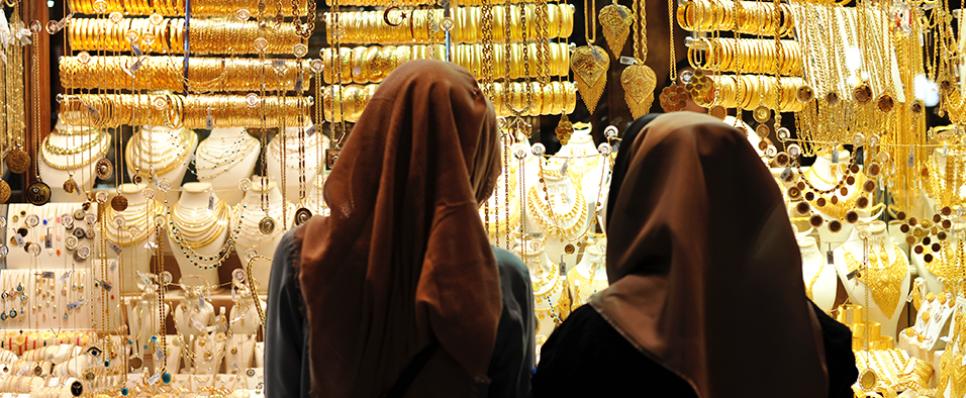Published: 29 Oct 2018
Understanding the significance of gold in Middle Eastern countries

Gold has been a significant part of the Middle Eastern culture for centuries. Needless to say; it holds deep economic, cultural, social, and aesthetic relevance in these nations even today.
The Middle East’s first tryst with gold
Biblical references are a major source of information on the importance of gold in middle-eastern society. Gold was known to be the largest monetary standard during those times. The three most common weights were half-shekel, shekel and talent. A gold ‘talent’ was the largest monetary standard and the most commonly used unit of mass, weighing 35 kgs. ‘Shekel’, an alloy of gold also known as electrum or green gold, was also commonly used as a unit of measure and weighed 11.3 grams. This means that as many as 3000 shekels would make up one talent.
Fun facts on gold: One talent of gold would be worth almost $432,132 today!
And this was just the beginning; gold soon grew to become a prominent choice of metal for use in ornamentation as well.
The first gold work in the transcontinental region dates back to 2400 BCE, when wooden lyres and harps in the Royal Cemetery in Mesopotamia (now Iraq), were inlaid with gold. Since then, gold has been used to decorate temples, tombs, statues, weapons, glassware, and shrines. In addition, it is believed that gold has been used as jewellery in the ancient civilisations of the Middle East for over 6000 years.
The extensive use of gold brought about various discoveries of the metal over time. Here are some interesting finds from those times.
One of the oldest known methods of testing the purity of gold, called fire assay (separating gold from impurities by the fusion process) was discovered in the third millennium BC by the Babylonians.
A few centuries later, the Egyptians learned they could alloy gold to increase its strength and durability, and also add colour pigments to it.
It was around the same time that the Egyptians started experimenting with a casting method called lost-wax casting (duplicating a gold sculpture from a wax sculpture). This process is used till date to create fine, intricate sculptures.
These were some of the ways in which gold played a significant role in the ancient Middle East. Here's a look at how the Middle East has taken forward its role in the global gold community today:
The modern-day hub for gold markets
The Middle East is the world’s largest source and the second largest market for gold. Dubai or the ‘City of Gold’ has had a prominent role to play in establishing the region as a significant force in the global gold market.
But, how did this come about?
Back in the 1900s, merchants were drawn by the tax-free and trade-friendly environment of Dubai and decided to set up shops near the creek and harbour. Over time, more and more merchants set up their shops and started selling gold. Dubai provided the key ingredients necessary for the success of any gold market – safety, security, ease of doing business, and proximity to sources of both supply and demand for gold. Today, more than 400 retail and wholesale gold stores operate in Dubai’s illustrious gold souk – one of the largest retail gold markets in the world. Jewellery lovers from all over the world visit the gold souk in pursuit of some of the best deals on gold jewellery.
Whether it is in the form of jewellery or money, the nations of the Middle East have always given a lot of importance to gold due to the stability it offers against political and economic unrest. Two-thirds of the jewellery purchased in the Middle East is used for savings, particularly in rural areas where the banking system has not yet penetrated. Gold also provides a sense of financial security to the women in the Middle East as it is believed to protect them against any misfortune.











